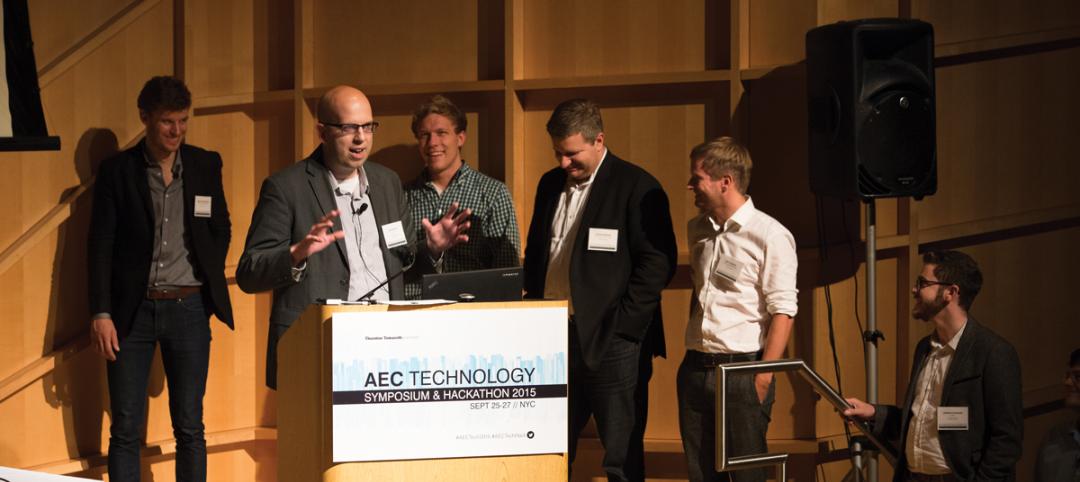The big room. The hub. Central operations. Whatever they’re called, project team co-location ventures are popping up in increasing numbers as Building Teams face ever-complex projects with tighter schedules and budgets.
The rise of BIM-driven projects, prefabrication, and highly collaborative project delivery methods—such as design-assist and integrated project delivery—have accelerated the demand for in-person, cross-team collaboration.
Successful co-location ventures are not as simple as locking the team in a room for 12-18 months. They require a careful balance of risk sharing, trust, accountability, and scope sharing, as well as a commitment to collaboration.
BD+C reached out to several co-location experts for tips and tricks on maximizing these setups. They offered the following advice:
Hold a “PEP” rally. Experts agree that a kickoff event—with all key stakeholders in the room—is absolutely critical both for building a spirit of camaraderie and for aligning the expectations and objectives for the project.
“We’re finding in co-location environments, the best practitioners in the business are spending a lot of time thinking about high-performance teaming and the sociology behind working together,” says John Tocci, Sr., CEO of Tocci Building Cos., whose firm regularly organizes co-location ventures.
On larger projects, Tocci kicks off co-locations with a day-and-a-half PEP (project execution planning) session facilitated by a process expert and former DuPont chemical engineer. Senior management meets for a half day to sync expectations and objectives for the project. On the second day, the entire team (upwards of 60 people) meets to confirm and prioritize the project objectives, unearth potential pitfalls, and formulate a roadmap for meeting the project goals.
“The whole team, within a few days, tears the project apart,” says Tocci. “People start bearing their professional souls about what it is they’re concerned about when coming on board.”
Make sure all doers are present. On a recent co-location venture for a healthcare client, architect Shepley Bulfinch quickly learned that while all levels of its team were prepared, other firms were not. The biggest issue: firms only sent their team leaders to the co-location collaboration sessions; the professionals doing the actual work stayed back at the home office.
“This was difficult for our staff when they realized that the other parties weren’t sending those doing the work and, therefore, work was not getting done,” says Cathleen Lange, AIA, LEED AP, Principal with Shepley Bulfinch.
Create spaces that are conducive to collaboration. Large, open, flexible spaces are a must so that teams can quickly reconfigure when needed. Tocci recommends plenty of whiteboards, tack-up boards, and blank wall space for pull planning and other Lean process exercises. Also important are creature comforts like clean bathrooms and phone booths so people can duck out to take a personal call.
Offer a mix of meeting room sizes and breakout spaces. “People need spaces so that when a problem arises, a team can go off into an area and start whiteboarding to see what to do with it,” says Tocci.
Be very specific when laying the groundwork for the co-location. You’ll need to have solid answers for the following questions:
• Who’s paying for the space, equipment, technology? The owner? Contractor? Shared cost structure?
• Who’s required to attend? How are they being compensated for their time away from the home office?
• What are the requirements for digital information transfer, responsibilities, and governances?
Strip all branding. “The most successful co-location ventures we’ve had have been completely unbranded, where you don’t see campfires or tribes within the facility,” says Tocci. “That defeats the whole purpose. The goal is total integration, silo-less stationing.”
“Subs” don’t exist in co-location ventures. A healthy co-location culture is one that breaks down the traditional silos. That means ditching the term “subcontractor” in favor of “trade partner,” says Tocci. “It’s not just a warm and fuzzy name,” he says. “They are true partners in the process.”
Master the trust triangle. Building trust across all levels and disciplines is the secret sauce to successful co-location projects. Tocci recommends reading The Five Dysfunctions of a Team: A Leadership Fable (http://amzn.to/2buPW16) to help break down silos and strengthen trust and accountability among project team members.
“Establishing trust among all parties in the co-location room is essential,” adds Lange. “All it takes is one skeptical person to bring the whole room down.”
Incorporate visual cues to maintain accountability. Whether using large-screen monitors or simple signage, presenting real-time performance metrics—burn rates on cash, performance on budget, KPIs, etc.—will help maintain accountability across the team. Even simple traffic lights for tracking major indices like budget and schedule are helpful. “Someone can walk in, look around the room, and within a few minutes they’ll have a sense of the health and vitality of the project,” says Tocci.
Related Stories
Sponsored | BIM and Information Technology | Nov 25, 2015
Contractor leverages dynamic site logistic plan as BIM deliverable
I recently sat down with two Architects-Turned-VDC-Process-Managers to discuss the ways in which they are leveraging technology to bring the value of BIM downstream
BIM and Information Technology | Nov 24, 2015
Solving the data conundrum with better tools to capture, share, and analyze information
At a recent Thornton Tomasetti symposium, experts showed how designs and projects can be improved by granular information that’s accessible to more users.
Modular Building | Nov 19, 2015
AECOM and Project Frog form partnership for building modular data centers
The Rapid Deployment Team will provide solutions for data centers both small (1 MW) and large (50+ MW).
BIM and Information Technology | Nov 18, 2015
AIA: Energy modeling key to reaching carbon neutrality in buildings
Energy modeling allows architects to be more ambitious with energy-saving in their design projects.
Green | Nov 17, 2015
DOE launches new data collaborative to help cities and states boost building efficiency
The SEED Standard will help manage, standardize, share performance data.
Sponsored | BIM and Information Technology | Nov 12, 2015
Is the PDF revolution advancing BIM workflows?
Many project teams who struggle to get everyone up to speed with BIM, find PDFs a useful tool to bridge the gap between the BIM world and the paper world
BIM and Information Technology | Nov 3, 2015
How virtual and augmented reality can shape architecture and design
Gensler's Alan Robles examines a few ways VR and AR could create value for architecture and design professionals.
BIM and Information Technology | Oct 29, 2015
MIT develops ‘river of 3D pixels’ to assemble objects
The Kinetic Blocks can manipulate objects into shapes without human interference.
BIM and Information Technology | Oct 27, 2015
Magic Leap's breakthrough augmented reality project continues to generate support
The company is developing the Dynamic Digitized Lightfield Signal. It projects images onto the retina, giving users an interactive 3D experience.
BIM and Information Technology | Oct 26, 2015
Tableau’s new app, Vizable, converts spreadsheets into charts and graphs
Everyday users can simplify large amounts of data and sift through it interactively.















